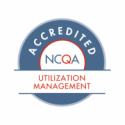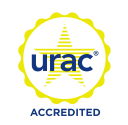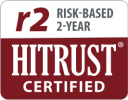The Accreditation Gap Analysis | 5 Reasons Why It’s Critical
When taking any journey you typically travel from point A to point B. But what if you didn’t know where point A was? You would have no idea how long the trip would take. No clue as to the best way to get there, and perhaps no idea how exactly you would arrive. This is exactly what seeking accreditation without an Accreditation Gap analysis is like. You know where you want to go….toward attainment of full accreditation status….but you have no idea where you are starting.
Today’ blog will focus on 5 reasons why an Accreditation Gap Analysis is a critical starting point for organizations deciding to pursue accreditation for the first time, and how it can be helpful for those organizations who are getting re-accredited.
1. You Need a Realistic Picture of Where Your Organization is at
The best way to get a plan in place is determining the level of readiness your organization is at when beginning the accreditation process. The Accreditation Gap analysis provides this critical data. By taking the standards, and conducting a thorough review of your organization as it currently operates you can gain tremendous insight and perspective into just how prepared for accreditation you currently are.
You may find that there are significant organizational changes related to departmental structure that need to take place, or perhaps you will find that your organization is operating at close to the required level of proficiency. Either way it is best to begin pursuing accreditation by strongly defining your starting point via an Accreditation Gap Analysis. Knowing exactly where you stand from the beginning is essential toward constructing a solid road map toward accreditation and determining just how you will get to your final accreditation destination by initially defining your organizations individual starting part.
2. You Need an Effective Way to Manage the Process
One of the most impactful ways to achieve accreditation on time, and within a focused budget is managing the process of accreditation readiness from start to finish. The Accreditation Gap analysis is a critical component in defining your starting point, and the outcome of the analysis which will highlight deficiencies across the organization will allow you to create a road map, or to project manage the accreditation process, greatly increasing the likeliness of success.
A solid Accreditation Gap analysis should identify for your organization which standards you are currently meeting (in whole), which you partially meet, and which you are deficient in. The outcome of this analysis will not only help you identify weaknesses within your organization, but will allow you to construct a readiness project plan that provides appropriate resource allocation for those areas in which either the greatest deficiencies were noted, or key deficiencies were noted. Having the Accreditation Gap analysis information at hand will also let you effectively create a sound timeline and identify key milestones as you prepare for Accreditation.
3. Readiness Levels can Vary Within an Organization – You Need to Find Your Focus
Seldom is an organization at a standard readiness percentage for accreditation across the board at the beginning of the accreditation process. There can be significant variations in how ready an organization is to meet accreditation standards by Department, process, and function. For instance, perhaps your current processes meet accreditation standards, but they are not appropriately documented. Or perhaps your Human Resource files are 100% ready, but you are missing key reports related to quality.
Most often readiness levels will have a high variance rate between disparate internal departments and functions. It is a mistake to assume that you are, let’s say, 85% compliant with accreditation standards as an organization. The truth is, in most cases you may be 85% compliant as it pertains to some standards…..but only 15% compliant when it comes to others.
Knowing where your strengths and weaknesses are in terms of readiness is critical to finding your focus in the accreditation preparation process. The Accreditation Gap analysis can highlight where you are already conducting business in a way which is acceptable according to accreditation standards, but more importantly, will uncover key areas where you fall significantly short of meeting accreditation standards.
Knowing where your biggest Gaps are in accreditation readiness will allow you to develop a plan to triage these areas of the organization, and more appropriately focus attention and resources toward bringing them up to standard. Without an Accreditation Gap analysis you may find that you have equally allocated resources for readiness across the board causing some areas to fall short in making the rapid improvements needed for accreditation, while others have excessive resources creating internal waste and inefficiency.
4. You Need to Know Key Risks
Key risks can vary for each and every organization, but without an accreditation Gap analysis, you may not uncover your key risks until it is too late. The best prepared organizations are those who have a clear perspective and understanding of their accreditation deficiencies from the beginning, and know how to weigh those deficiencies accordingly. Accreditation readiness priorities should be clearly highlighted based on the following:
- Anything which is a zero allowable deficiency should be addressed first – these are items for which there is no wiggle room during accreditation. They are non-starters and without clearly meeting these requirements, no matter how prepared you are in all other areas- you will not achieve accreditation
- Anything which requires significant organization change – perhaps you have an area that will require some departmental restructuring, or there is a quality initiative that you don’t have that you need to create. Any area of the organization which will require significant alterations are creating of a non-existing item should be prioritized next
- Reporting or historic information – for many types of accreditation you will be asked to provide data or records going back for a period of up to two years. If you have not previously captured this data it is key to begin doing so immediately, and to find a way to mine the data historically available. Reporting takes time and effort, and should be appropriately prioritized
- HR Files and Staff Training – everyone is busy, but staff requirements for accreditation will not wait. Make sure that you allow appropriate time to conduct all staff required trainings, to develop these training in a meaningful way, and to capture and log the appropriate training documentation in HR files well before accreditation. Additionally, many training are required to be conducted on an annual basis, so make sure you are aware of exactly what the training requirements are to ensure you are appropriately covered.
5. Things Change – Know the Changes and How to Improve
Perhaps this is not your first accreditation, but that does not mean that an accreditation Gap analysis is not still relevant. For organizations undergoing re-accreditation, or for those who would like to achieve a higher accreditation score (such as NCQA Health Plan Accreditation organizations), an Accreditation Gap analysis is still key.
Requirements can change between accreditation cycles. This means that you may have been in compliance with Accreditation standards a year ago, but will not be in compliance with those same standards when it comes time for re-accreditation. Before prep work for re-accreditation commences you should consider conduction a re-accreditation Gap analysis to ensure that you can replicate the level of accreditation success that you achieved your first time.
The bar has been raised. Not only can some requirements change in between accreditation cycles, but the standards that you need to meet can become more difficult for subsequent accreditations’. Additionally, those who may have simply achieved accreditation status for their initial accreditation may want to achieve “commendable” or “excellent” status for their subsequent accreditations’. An accreditation Gap analysis can be the key to discovering where your organization fell short the first time, and where you want to concentrate your efforts during the re-accreditation process to either achieve re-accreditation, or a re-accreditation status which improves upon your initial accreditation attainment status.
Summing it all up
Successfully achieving your desired accreditation hinges upon your ability to proactively plan, allocate resources, identify risks, and recognize key milestones. The Accreditation Gap analysis is the key to accomplishing these objectives and the outcome of this analysis will provide you with a realistic look at where your organization stands in comparison to what is required for the successful attainment of accreditation. Whether conducted internally, or outsourced to an accreditation consulting expert, the results of an Accreditation Gap analysis function as a proficient score card which will show you exactly where you are beginning on your accreditation journey, and will assist you in ensuring success throughout your accreditation readiness efforts.
For information on obtaining a custom Accreditation Gap Analysis and ensuring the success of your organization, contact BHM Healthcare Solutions, Inc., the only accreditation consulting firm with a 100% client satisfaction rating, and a 100% Accreditation Success rate. You can find accreditation success, we can help.







